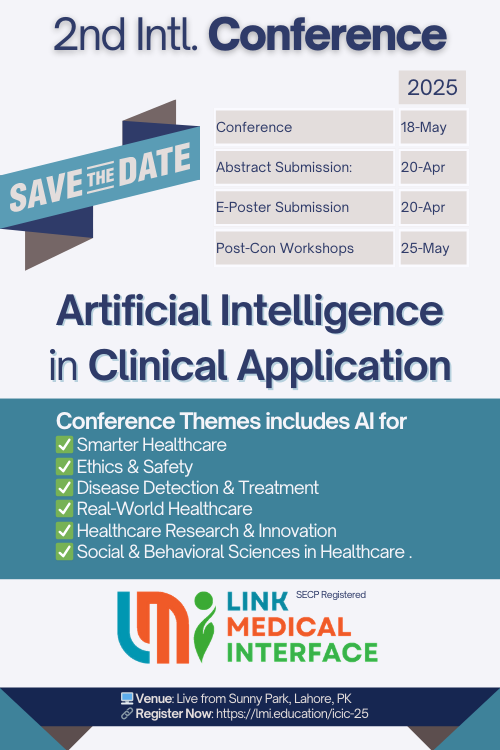Tendency of Hemiplegic Shoulder Pain and Its Association with Activities of Daily Living Limitations in Stroke Population
DOI:
https://doi.org/10.61919/jhrr.v4i2.1003Keywords:
Hemiplegic shoulder pain, Barthel Index, prevalence, association, shoulder disabilityAbstract
Background: A typical post-stroke consequence is shoulder pain, which discourages movement and hinders recovery. Understanding hemiplegic shoulder pain syndrome requires identifying which shoulder structures can produce pain post-stroke. Stroke patients may experience shoulder pain due to conditions like shoulder subluxation, rotator cuff impingement or rupture, adhesive capsulitis, bicipital tendonitis, among others, which contribute to activity limitations in daily living.
Objective: To assess the prevalence of hemiplegic shoulder pain and its association with activity limitations in daily living among stroke patients.
Methods: A cross-sectional survey was conducted on 377 participants after institutional ethical approval. Data were collected using a convenient sampling technique from hospitals in Haripur, Mansehra, and Abbottabad, involving patients with a stroke duration of not less than one month. Shoulder pain and disability were measured using the standardized Shoulder Pain and Disability Index (SPADI). Patients reporting shoulder pain were further evaluated using the Barthel Index to assess limitations in daily living activities. Associations between categorical variables were determined using the Chi-square test, and correlations between continuous variables were analyzed using Pearson’s Correlation Test. Data were analyzed using SPSS version 25.
Results: The mean age of participants was 46.85 ± 7.30 years, with 58.1% females and 41.9% males. The majority were overweight (37.6%) and had right hemiplegic stroke (52.5%). Hemiplegic shoulder pain was reported by 54.5% of stroke patients, with 59.6% experiencing right-sided pain. A moderate to strong correlation was found between shoulder pain and activity limitations in daily living (p < 0.001, r = -0.765).
Conclusion: This study found that the majority of stroke survivors experienced post-stroke shoulder pain. There was a significant association between shoulder pain-related disability and activity limitations, indicating the need for specialized care.
Downloads
References
Sacco RL, Kasner SE, Broderick JP, Caplan LR, Connors J, Culebras A, et al. An Updated Definition of Stroke for the 21st Century: A Statement for Healthcare Professionals from the American Heart Association/American Stroke Association. Stroke. 2013;44(7):2064-89.
Dromerick AW, Edwards DF, Kumar A. Hemiplegic Shoulder Pain Syndrome: Frequency and Characteristics During Inpatient Stroke Rehabilitation. Arch Phys Med Rehabil. 2008;89(8):1589-93.
Akhlaq U, Ayaz SB, Akhtar N, Khan AA. Frequency and Intensity of Shoulder Pain After Stroke: A Hospital-Based Study. Pak Armed Forces Med J. 2016;66(1):71-4.
Anwer S, Alghadir A. Incidence, Prevalence, and Risk Factors of Hemiplegic Shoulder Pain: A Systematic Review. Int J Environ Res Public Health. 2020;17(14):4962.
Lindgren I, Jonsson A-C, Norrving B, Lindgren A. Shoulder Pain After Stroke: A Prospective Population-Based Study. Stroke. 2007;38(2):343-8.
Jönsson A-C, Lindgren I, Hallström B, Norrving B, Lindgren A. Prevalence and Intensity of Pain After Stroke: A Population-Based Study Focusing on Patients’ Perspectives. J Neurol Neurosurg Psychiatry. 2006;77(5):590-5.
Serrezuela RR, Quezada MT, Zayas MH, Pedrón AM, Hermosilla DM, Zamora RS. Robotic Therapy for the Hemiplegic Shoulder Pain: A Pilot Study. J Neuroeng Rehabil. 2020;17(1):1-12.
Huang Y-C, Chang K-H, Liou T-H, Cheng C-W, Lin L-F, Huang S-W. Effects of Kinesio Taping for Stroke Patients With Hemiplegic Shoulder Pain: A Double-Blind, Randomized, Placebo-Controlled Study. J Rehabil Med. 2017;49(3):208-15.
Zhao H, Nie W, Sun Y, Li S, Yang S, Meng F, et al. Warm Needling Therapy and Acupuncture at Meridian-Sinew Sites Based on the Meridian-Sinew Theory: Hemiplegic Shoulder Pain. Evid Based Complement Alternat Med. 2015;2015.
Hochsprung A, Domínguez-Matito A, López-Hervás A, Herrera-Monge P, Moron-Martin S, Ariza-Martínez C, et al. Short-and Medium-Term Effect of Kinesio Taping or Electrical Stimulation in Hemiplegic Shoulder Pain Prevention: A Randomized Controlled Pilot Trial. NeuroRehabilitation. 2017;41(4):801-10.
Eslamian F, Farhoudi M, Jahanjoo F, Sadeghi-Hokmabadi E, Darabi P. Electrical Interferential Current Stimulation Versus Electrical Acupuncture in Management of Hemiplegic Shoulder Pain and Disability Following Ischemic Stroke - A Randomized Clinical Trial. Arch Physiother. 2020;10:1-12.
Li Y, Yang S, Cui L, Bao Y, Gu L, Pan H, et al. Prevalence, Risk Factor, and Outcome in Middle-Aged and Elderly Population Affected by Hemiplegic Shoulder Pain: An Observational Study. Front Neurol. 2023;13:1041263.
Aras MD, Gokkaya NKO, Comert D, Kaya A, Cakci A. Shoulder Pain in Hemiplegia: Results From a National Rehabilitation Hospital in Turkey. Am J Phys Med Rehabil. 2004;83(9):713-9.
Rahmatian A, Bastani E, Shokri F, Karbasfrushan A. Prevalence of Hemiplegic Shoulder Pain in Iran: A Systematic Review and Meta-Analysis. Anesthesiol Pain Med. 2023;13(3).
Ali S, Tariq F, Arif A, Anwaar M, Ashraf S. Frequency and Intensity of Shoulder Pain in Patients After Stroke. J Riphah Coll Rehabil Sci. 2022;10(01).
Lindgren I, Brogårdh C. Poststroke Shoulder Pain and Its Association With Upper Extremity Sensorimotor Function, Daily Hand Activities, Perceived Participation, and Life Satisfaction. PM&R. 2014;6(9):781-9.
Chalodiya H, Khunt D, Kakadiya S, Ramanandi VH. Prevalence of Shoulder Pain and Disability Among Cerebrovascular Accident Patients of Surat City in Gujarat State of India. Indian J Physiother Occup Ther. 2020;14(1):15-20.
Lindgren I, Brogårdh C. Poststroke Shoulder Pain and Its Association With Upper Extremity Sensorimotor Function, Daily Hand Activities, Perceived Participation, and Life Satisfaction. PM&R. 2014;6(9):781-9.
Meyer S, De Bruyn N, Krumlinde-Sundholm L, Peeters A, Feys H, Thijs V, et al. Associations Between Sensorimotor Impairments in the Upper Limb at 1 Week and 6 Months After Stroke. J Neurol Phys Ther. 2016;40(3):186-95.
Downloads
Published
How to Cite
Issue
Section
License
Copyright (c) 2024 Hafsa Rashid, Ayesha Javed, Irrij Javed Jadoon, Palwasha Masood, Naheeda Javed, Pakeza Sarwar, Saima Babar, Kiran Shafique

This work is licensed under a Creative Commons Attribution 4.0 International License.
Public Licensing Terms
This work is licensed under the Creative Commons Attribution 4.0 International License (CC BY 4.0). Under this license:
- You are free to share (copy and redistribute the material in any medium or format) and adapt (remix, transform, and build upon the material) for any purpose, including commercial use.
- Attribution must be given to the original author(s) and source in a manner that is reasonable and does not imply endorsement.
- No additional restrictions may be applied that conflict with the terms of this license.
For more details, visit: https://creativecommons.org/licenses/by/4.0/.






